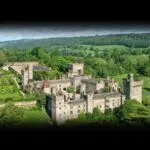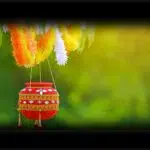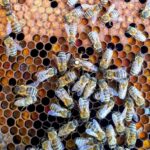Restoration Day in the Dominican Republic takes place on August 16 every year. This event honors a battle that finally led to the nation’s second independence from Spain. Locally called the “el día de la Restauración Dominicana,” this event is a public holiday in the country, which sees people participate in parades, street fairs, and even military reviews.
History of Restoration Day (Dominican Republic)
Hispaniola, the island where the Dominican Republic and Haiti currently cohabit, was historically under nearly continual foreign domination. The Spanish claimed it for themselves after Christopher Columbus sighted the island in December 1942, only to fight skirmishes and claims against the French and British in the 1700s and early 1800s.
Haiti declared independence by 1804, also attempting to establish control over the eastern side of Hispaniola, the land that would eventually become the Dominican Republic. They undertook a 22-year military occupation of this land while also subjecting the Spanish-occupied regions to countless invasions.
The Dominicans only gained freedom from Haitian rule in 1844, when rebels ousted the Haitians occupying their land. In 1861, 17 years later, the nation was still subject to threats from Haiti, which placed the unity of Hispaniola above all else. By this time, the leaders had also destroyed the Dominican Republic’s economy, compelling the government to return the nation to Spain, which used the occasion to reassert its influence over Latin America.
This re-colonization faced massive protests right from the start and even led to a failed rebellion only a few weeks into the Spanish re-occupation. A large-scale guerrilla war broke out by 1863, with most towns and cities wholeheartedly joining the fight against the Spanish. The Spanish gave up control of the island in 1865, returning it to the Dominicans after incurring significant human and financial expenses and the danger of American intervention in their favor.
The Dominicans honor this fight to gain independence a second time with Restoration Day celebrations that take the form of military parades, fairs, events, and a day off for the general public.
Restoration Day (Dominican Republic) timeline
Hispaniola is seized by Haitians, who contend that the territory shouldn't be separated.
Dominican patriots declare independence from Haitian rule, forever marking this day as Dominican Independence Day.
The Dominican Restoration War begins when rebels attack and raise the new Dominican Flag atop Capotillo Hill near the province of Dajabón.
Queen Isabella II signs an annulment of the annexation of the Dominican Republic from the Spanish empire.
Restoration Day (Dominican Republic) FAQs
What happened in the Dominican Republic on February 27, 1844?
On February 27, 1844, Juan Pablo Duarte and the rest of La Trinitaria successfully established the Dominican Republic’s independence as a sovereign state with a cannon shot from the Puerta del Conde in Santo Domingo and the rise of the Dominican blue, red, and white flag.
What was the Dominican Republic called before?
The state was known as Santo Domingo in English until the early 20th century.
Why is the Dominican Republic so poor?
Unemployment is one factor contributing to poverty in the Dominican Republic. Compared to 61% of men employed, women make up 33% of the workforce. Because of this lack of education, women are at a disadvantage. Women frequently drop out of school to look after the home and family.
Restoration Day (Dominican Republic) Activities
Honor their numerous fights for independence
Consider the measures the nation has repeatedly put in place to guarantee that every Dominican will move forward and live a life free from outside influence. Celebrate the memory of every freedom fighter by learning about them and their contributions to the country.
Learn what makes this culture unique
To truly understand what the country fought so hard for, immerse yourself in their food, music, art, culture, language, and traditions. Taste authentic dishes, brush up on your Dominican Spanish skills, learn salsa and bachata, and learn about famous Dominicans like Oscar de la Renta and Maria Montez.
Read up on the Restoration War
Learn about the years of effort, the sacrifices of brave Dominicans, and the confluence of multiple events that eventually led to the Spaniards quitting this colony. Check out articles online, read up on various first-hand testimonies, and read the biographies of the rebel leaders who helped the country win its independence.
5 Interesting Facts About The Dominican Republic
They celebrate independence twice
There's the Dominican Republic Independence Day on February 27 and the Dominican Republic Independence Restoration Day on August 16.
It was the center of the Taíno culture
Anthropologist studies indicate the indigenous Taínos believed their world began in the limestone caves underlying the Dominican Republic, which is why, to this day, Hispaniola is known to be the heart of Taíno culture.
Spain's losses were immense
The Dominican Restoration War cost the nation more than 33 million pesos, and it resulted in the deaths of nearly 10,000 men, the majority of whom were sick.
The presidential swearing-in
The Dominicans put so much stock into Restoration Day that the presidential swearing-in, which occurs every four years, takes place on this day.
Haiti helped Dominicans fight the Spanish
Despite long-standing conflicts with the Dominicans, Haiti aided Dominican rebels in the Restoration War after the Spanish evicted Haitians living in areas along the Haitian-Dominican border.
Why We Love Restoration Day (Dominican Republic)
It celebrates the Dominicans' spirit
The Dominicans struggled for their freedom numerous times, including during the Restoration. Like in the other instances, the nation banded together in this one as well to attain independence. Restoration Day honors the people of the Dominican Republic for their tenacity and fortitude in the face of ongoing persecution.
The war inspired other countries
The Dominican struggle for (re)independence didn't just result in the country regaining its freedom. It also demonstrated to Chileans and Peruvians, who were later Spanish colonies, that the powerful Spanish empire could be overthrown.
It also inspired neighborly sentiments
Not only did the Haitians end up helping the Dominicans win the war, but it also showed them their vision of a united Hispaniola under Haitian rule was not feasible. It led to the countries peacefully coexisting as neighbors on the same island.
Restoration Day (Dominican Republic) dates
| Year | Date | Day |
|---|---|---|
| 2025 | August 16 | Saturday |
| 2026 | August 16 | Sunday |
| 2027 | August 16 | Monday |
| 2028 | August 16 | Wednesday |
| 2029 | August 16 | Thursday |


















